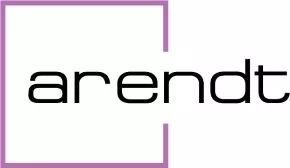- within Finance and Banking topic(s)
- in European Union
- in European Union
- in European Union
- in European Union
- in European Union
- in European Union
- in European Union
- in European Union
- in European Union
- with readers working within the Banking & Credit and Securities & Investment industries
- within Real Estate and Construction, Litigation, Mediation & Arbitration and Insolvency/Bankruptcy/Re-Structuring topic(s)
Although the CSSF notes an overall satisfactory level of compliance with SFDR disclosure requirements in the investment management sector, the regulator still noted some room for improvement and has asked all Luxembourg supervised entities to assess their compliance with the findings of the CSA and adopt any necessary improvements.
Background
In July 2023, ESMA launched a Common Supervisory Action (CSA) to assess compliance of supervised entities in the investment manager sector with SFDR disclosure requirements, including taxonomy alignment, ESMA's supervisory briefing principles on sustainability risks and disclosures and AIFMD/UCITS Directive rules on sustainability risk integration. ESMA's June 2025 report found satisfactory compliance overall, with some areas needing improvement.
On 30 September 2025, the CSSF published its feedback report, which
endorses ESMA's findings for Luxembourg-domiciled supervised
entities and provides further recommendations and examples of good
practice.
Scope
The CSSF selected 30 Luxembourg-domiciled supervised entities in the investment management sector for this CSA and focused on the same sample throughout both stages of the CSA.
Key findings
The CSSF feedback report highlights several observations:
- Entity-level SFDR disclosures
- Remuneration policies – while all the sampled supervised entities addressed sustainability risk integration in their remuneration policies, the CSSF emphasises the need for precise and specific information on how ESG metrics/factors are incorporated into remuneration processes.
- PAI statements – all the sampled supervised entities made this disclosure, but the CSSF notes that it was not always easily accessible on their websites. Most supervised entities included coverage percentages for each PAI metric in their statements, with figures ranging from less than 10% to over 90%. The CSSF also provides guidance for each sub-section of the statement.
- Risk management framework – most supervised entities stated that their sustainability risk management processes cover all funds, including those disclosing under Article 6. However, the CSSF identifies cases where policies/procedures still need to be reviewed to ensure full coverage and to ensure an equivalent level of risk assessment compared to Article 8 or 9. The CSSF also observes room for improvement with regards to risk indicators/limits, coverage scope, reporting frequency and escalation processes for non-compliance.
- Product-level disclosures
- Sustainable investment definition – supervised entities applied their own criteria, but in some cases, the methodology was disclosed in overly general terms and not always in the relevant documents, thus limiting transparency. The CSSF reiterates that information must be provided in a manner that is easily accessible, non-discriminatory, prominent, simple, concise, comprehensible, fair, clear and not misleading. The CSSF also provides examples of the most common criteria used to assess the three pillars of the sustainable investment definition (i.e. contribution, DNSH, good governance test).
- Fund names – 75% of the sampled funds included ESG or sustainability terms in their names, showing overall satisfactory compliance with ESMA's fund naming guidance. The CSSF notes that it expects adequate disclosure in the precontractual documentation of elements supporting the use of ESG or sustainability-related terms in fund names.
- Website disclosures – most sampled supervised entities included an adequate summary of the relevant sections in their two-page summary of the website disclosures. However, the CSSF observed instances where the disclosures in the summary section failed to clearly identify or adequately summarise these specific sections, opting instead for a general overview of ESG-related information.
- Sustainability credentials – most entities communicate sustainability credentials (labels, ratings, certifications) publicly or directly to investors. The CSSF found disclosures generally fair and clear, though some needed better substantiation and references. In the CSSF's view, this is conditioned by the provision of specific information, namely by identifying the certifying body, confirming the credential is based on verifiable disclosed sources, specifying the validity period and ideally including a direct link to the certifying body's website for enhanced clarity.
- Article 6 funds – the CSSF did not identify any ESG-related text, imagery or sounds in the sampled Article 6 funds' disclosures.
- Periodic disclosures
- Consistency of periodic disclosures with precontractual documentation – actual sustainable investment levels in periodic disclosures met commitments in all cases. Most of the funds made no commitment to invest in activities aligned with the Taxonomy Regulation, whilst all the funds that committed to taxonomy-aligned activities reported actual levels exceeding the stated minimum thresholds.
- DNSH assessment – the CSSF observed that, for the sampled funds, some supervised entities did not consider all the PAIs indicators from 1 to 14 in Table 1 of Annex I of the SFDR RTS for the DNSH assessment of sustainable investments, which is mandatory.
Next steps
The CSSF is continuing to hold bilateral discussions with
supervised entities to ensure remediation of the CSA
findings.
It requests all supervised entities to conduct a comprehensive
assessment of their compliance with the observations in the ESMA
report and the CSSF feedback report, and to take the necessary
corrective measures where applicable.
The content of this article is intended to provide a general guide to the subject matter. Specialist advice should be sought about your specific circumstances.



